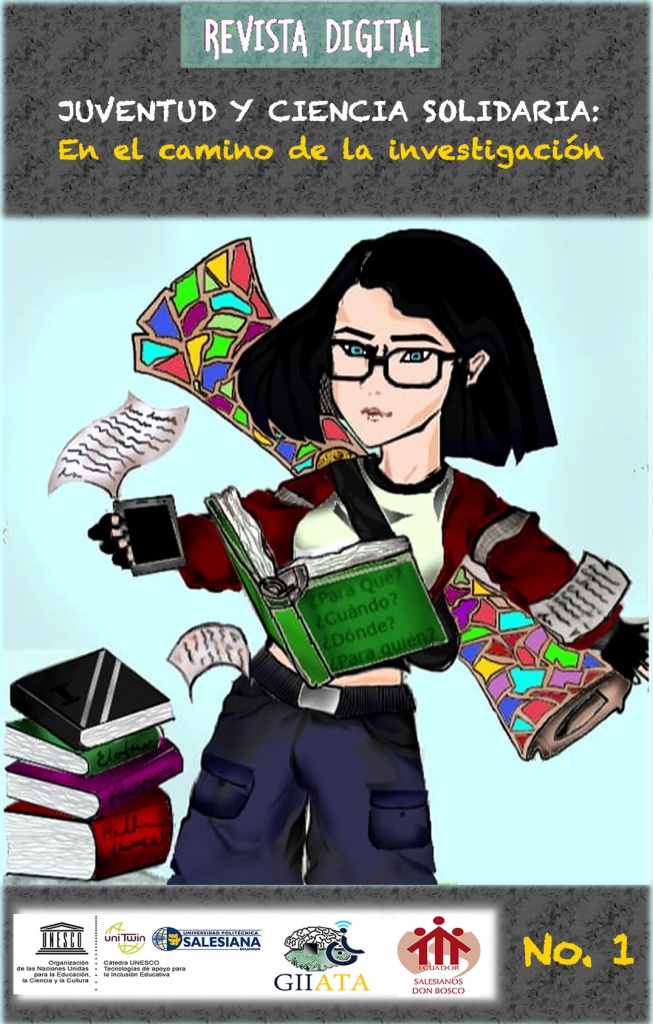Edición N°1 – Artículo 02
Textos en braille para niños invidentes
Autor: Jonnathan Pintado, Paola Pinos, Erick Carpio (Unidad Educativa Técnico Salesiano)
Resumen
Es muy importante que todos tengamos en cuenta a todos los niños con discapacidad visual, ya que ellos necesitan una adecuada atención y dedicación por parte de los demás. Por eso es importante generar un material didáctico para mejorar su educación, como es el hecho de crear textos en formato Braille para que tengan la información permanentemente y puedan revisarla cuando gusten, como un sustento para su educación y se puedan desarrollar mejor con el apoyo de material didáctico adaptado
Palabras clave: discapacidad visual, aprendizaje, material didáctico, ceguera, niños, educación.
Abstract
It is very important that we all take into account all visually impaired children, since they need proper attention and dedication from others. That is why it is very important to generate a didactic material to improve their education, as in the fact of creating texts in Braille format so that they have the information permanently and can review it whenever they want, as a support for their education and they ca develop better with the support of adapted didactic material
Keywords: visual disability, learning, didactic materials, blindness, children, education.
Edición N°1
Fecha de publicación: 07 diciembre del 2018.
This work is licensed under a Creative Commons Attribution-NonCommercial-ShareAlike 4.0 International License.
The Universidad Politécnica Salesiana of Ecuador preserves the copyrights of the published works and will favor the reuse of the works. The works are published in the electronic edition of the journal under a Creative Commons Attribution/Noncommercial-No Derivative Works 4.0 Ecuador license: they can be copied, used, disseminated, transmitted and publicly displayed.
The undersigned author partially transfers the copyrights of this work to the Universidad Politécnica Salesiana of Ecuador for printed editions.
It is also stated that they have respected the ethical principles of research and are free from any conflict of interest. The author(s) certify that this work has not been published, nor is it under consideration for publication in any other journal or editorial work.
The author (s) are responsible for their content and have contributed to the conception, design and completion of the work, analysis and interpretation of data, and to have participated in the writing of the text and its revisions, as well as in the approval of the version which is finally referred to as an attachment.
- Aquino Zúñiga, S. P., García Martínez, V., & Izquierdo, J. (2012). La inclusión educativa de ciegos y baja visión en el nivel superior: Un estudio de caso.
Sinéctica, (39), 01-21 - Crosso, C. (2014). El derecho a la educación de personas con discapacidad. Impulsando el concepto de educación inclusiva.
- ONCE. Organización Nacional de Ciegos Españoles, Casanova, M. A., & de Luna, M. Á. C. (2009). Educación y personas con discapacidad: presente y futuro. Fundación Once.
- Ochaita, E., & Espinosa, M. A. (2011). Desarrollo y educación de los niños ciegos y deficientes visuales: Areas prioritarias de intervención. Psykhe, 4(2).
- Soler, M. A. (1999). Didáctica multisensorial de las ciencias: Un nuevo método para alumnos ciegos, deficientes visuales, y también sin problemas de visión (Vol. 40). Grupo Planeta (GBS).
- Verdugo Alonso, M. Á., González, O., & del Carmen, M. (2005). Personas con discapacidad: perspectivas psicopedagógicas y rehabilitadoras (No. 376). Siglo Veintiuno de España.


